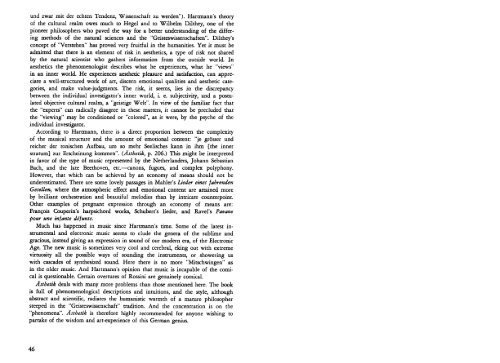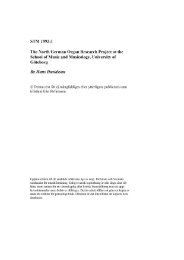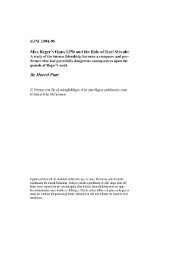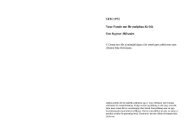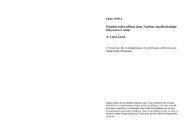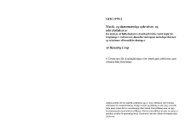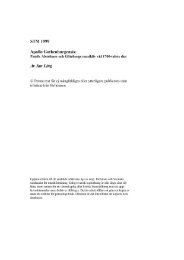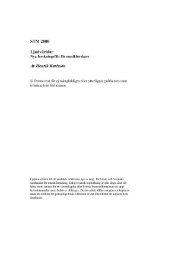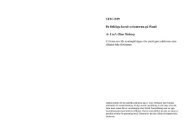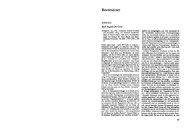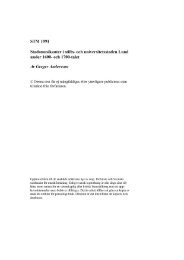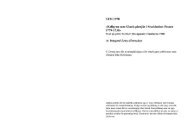Nicolai
Nicolai
Nicolai
You also want an ePaper? Increase the reach of your titles
YUMPU automatically turns print PDFs into web optimized ePapers that Google loves.
und zwar mit der echten Tendenz, Wissenschaft zu werden”). Hartmann’s theory<br />
of the cultural realm owes much to Hegel and to Wilhelm Dilthey, one of the<br />
pioneer philosophers who paved the way for a better understanding of the differ-<br />
ing methods of the natural sciences and the ”Geisteswissenschaften”. Dilthey’s<br />
concept of ”Verstehen” has proved very fruitful in the humanities. Yet it must be<br />
admitted that there is an element of risk in aesthetics, a type of risk not shared<br />
by the natural scientist who gathers information from the outside world. In<br />
aesthetics the phenomenologist describes what he experiences, what he ”views”<br />
in an inner world. He experiences aesthetic pleasure and satisfaction, can appre-<br />
ciate a well-structured work of art, discern emotional qualities and aesthetic cate-<br />
gories, and make value-judgments. The risk, it seems, lies in the discrepancy<br />
between the individual investigator’s inner world, i. e. subjectivity, and a postu-<br />
lated objective cultural realm, a ”geistige Welt”. In view of the familiar fact that<br />
the ”experts” can radically disagree in these matters, it cannot be precluded that<br />
the ”viewing” may be conditioned or ”colored”, as it were, by the psyche of the<br />
individual investigator.<br />
According to Hartmann, there is a direct proportion between the complexity<br />
of the musical structure and the amount of emotional content: ”je grösser und<br />
reicher der tonischen Aufbau, um so mehr Seelisches kann in ihm {the inner<br />
stratum) zur Erscheinung kommen”. (Ästhetik, p. 206.) This might be interpreted<br />
in favor of the type of music represented by the Netherlanders, Johann Sebastian<br />
Bach, and the late Beethoven, etc.-canons, fugues, and complex polyphony.<br />
However, that which can be achieved by an economy of means should not be<br />
underestimated. There are some lovely passages in Mahler’s Lieder eines fahrenden<br />
Gesellen, where the atmospheric effect and emotional content are attained more<br />
by brilliant orchestration and beautiful melodies than by intricate counterpoint.<br />
Other examples of pregnant expression through an economy of means are:<br />
François Couperin’s harpsichord works, Schubert’s lieder, and Ravel’s Pavane<br />
pour une infante défunte.<br />
Much has happened in music since Hartmann’s time. Some of the latest in-<br />
strumental and electronic music seems to elude the genera of the sublime and<br />
gracious, instead giving an expression in sound of our modern era, of the Electronic<br />
Age. The new music is sometimes very cool and cerebral, eking out with extreme<br />
virtuosity all the possible ways of sounding the instruments, or showering us<br />
with cascades of synthesized sound. Here there is no more ”Mitschwingen” as<br />
in the older music. And Hartmann’s opinion that music is incapable of the comi-<br />
cal is questionable. Certain overtures of Rossini are genuinely comical.<br />
Ästhetik deals with many more problems than those mentioned here. The book<br />
is full of phenomenological descriptions and intuitions, and the style, although<br />
abstract and scientific, radiates the humanistic warmth of a mature philosopher<br />
steeped in the ”Geisteswissenschaft” tradition. And the concentration is on the<br />
”phenomena”. Ästhetik is therefore highly recommended for anyone wishing to<br />
partake of the wisdom and art-experience of this German genius.


